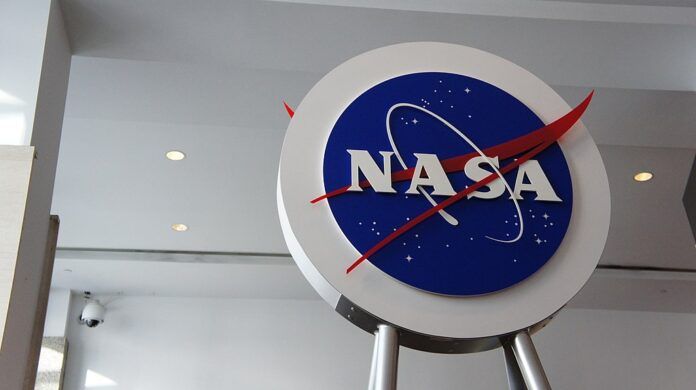A colossal rogue object, dubbed CWISE J1249, is speeding through space, potentially leaving the galaxy, as NASA scientists struggle to identify its nature.
NASA scientists are baffled by the discovery of a colossal celestial object moving through space at an astonishing speed of one million miles per hour. The object, named CWISE J1249, was detected by citizen scientists analyzing data from NASA’s Wide-field Infrared Survey Explorer (WISE) telescope. This object is so unique and mysterious that it might even exit the Milky Way galaxy, a rare feat for any celestial body.
CWISE J1249, which is approximately 27,306 times the size of Earth, presents a conundrum for astronomers. Despite its star-like size, its characteristics differ significantly from most known stars, which typically orbit the centre of the Milky Way in a more orderly fashion. The object’s low mass further complicates its identification, leaving NASA experts without a definitive answer to its nature.
The object could potentially be a low-mass star, though it might also be a brown dwarf—a type of celestial body that does not sustain steady hydrogen fusion in its core as regular stars do. This possibility makes CWISE J1249 particularly intriguing, as it challenges the current understanding of such objects. Brown dwarfs are known for their intermediate characteristics, existing between the categories of the smallest stars and the largest gas giant planets. However, none of the roughly 4,000 brown dwarfs previously discovered in WISE data have been observed moving at such a high velocity.
Adding to the mystery is the object’s unusual composition. CWISE J1249 contains much less iron and other metals than typical stars and brown dwarfs, suggesting it could be extremely old, possibly originating from one of the first generations of stars in our galaxy. This low metallicity makes it distinct from other celestial objects, complicating efforts to categorize it.
Given its high speed and unusual characteristics, some scientists speculate that CWISE J1249 could be a celestial body that formed in a very different environment from the rest of the Milky Way’s stars. Its rapid movement suggests it might even leave our galaxy, a phenomenon that is rarely observed.
NASA continues to study CWISE J1249, using advanced technology and expertise to determine its true nature. However, for now, it remains one of the most puzzling discoveries in recent astronomical research.
Analysis
Scientific Perspective
CWISE J1249’s discovery challenges existing scientific models and prompts a reevaluation of what we know about celestial bodies. Its high velocity and unusual composition suggest that it may not fit neatly into the current categories of stars or brown dwarfs. This object’s low metallicity indicates that it could be a relic from an earlier time in the universe, possibly formed in the very early stages of the Milky Way’s development. This raises questions about the diversity of celestial objects and how they evolve over time.
The potential for CWISE J1249 to leave the Milky Way adds another layer of intrigue. If confirmed, this would make it one of the few known objects to achieve such an escape velocity, providing a rare opportunity to study the dynamics of intergalactic travel. This discovery could open new avenues of research into how celestial objects interact with the gravitational forces of galaxies and what factors contribute to such high-speed ejections.
Technological Perspective
The detection of CWISE J1249 highlights the growing role of citizen scientists in astronomical discoveries. The data from NASA’s WISE telescope, which led to this discovery, was analyzed by volunteers, demonstrating the power of crowdsourcing in science. This collaborative approach not only accelerates the pace of discovery but also brings new perspectives to the analysis of complex data sets.
The challenge now lies in utilizing advanced observational technologies to further study CWISE J1249. High-resolution imaging and spectroscopy will be crucial in determining its exact composition and behavior. This could involve using telescopes like the James Webb Space Telescope, which can provide detailed insights into the object’s physical and chemical properties. As technology advances, so too does our ability to understand and categorize mysterious objects like CWISE J1249.
Cultural Perspective
The discovery of CWISE J1249 captivates the public’s imagination, tapping into the human fascination with the unknown. Rogue celestial objects, especially those that defy easy classification, often evoke a sense of wonder and curiosity. This discovery serves as a reminder that, despite all our technological advancements, the universe still holds many mysteries waiting to be uncovered.
Moreover, the involvement of citizen scientists in the discovery process democratizes science, allowing people from all walks of life to contribute to the expansion of human knowledge. This fosters a deeper connection between the public and scientific endeavours, encouraging greater interest in fields like astronomy and space exploration.
Economic Perspective
Discoveries like CWISE J1249 can have significant economic implications, particularly in the fields of space exploration and technology development. As interest in space grows, driven by such intriguing finds, investment in astronomical research and space technology is likely to increase. This could lead to the development of new tools and instruments designed to explore and understand the universe more effectively.
Additionally, the potential for this discovery to drive public interest could result in increased funding for space agencies like NASA. The more the public is engaged with space exploration, the more likely governments and private enterprises are to invest in research and development, leading to technological advancements that could benefit multiple industries.
